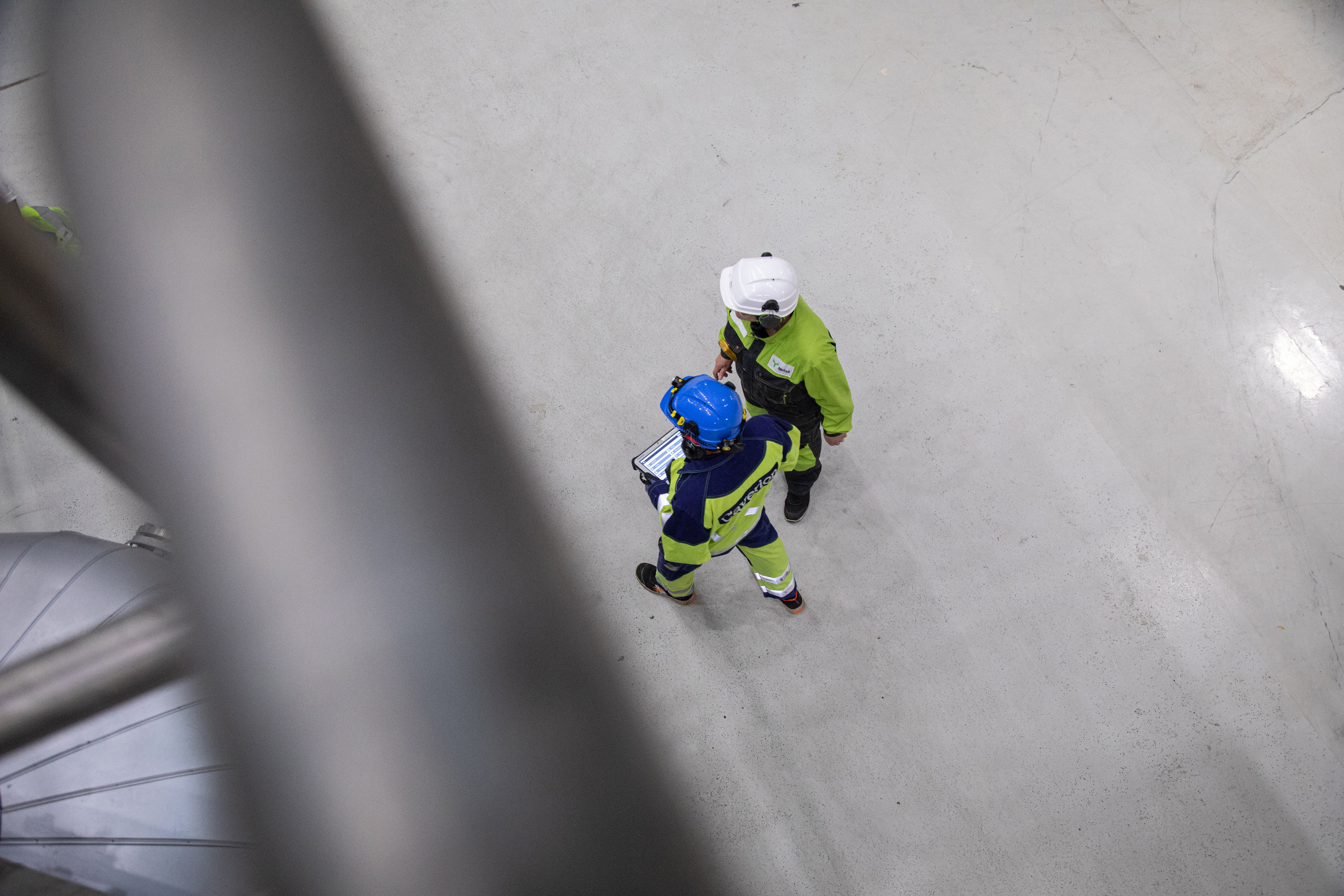Safety Manager Teemu Leppänen, who oversees safety at Metsä Fibre's four pulp mills and six sawmills, describes managing safety as a long-term, continuous learning process in which clear goals engage staff to develop occupational safety.
The key roles include foresight, identifying risks related to work tasks, and continuously making safety observations.
"Safety work is part of day-to-day life at our pulp mills and sawmills. For example, at the factory's morning meetings, safety observations that have come to light are reviewed, the necessary corrective measures are identified, and the responsibilities for implementing them are agreed on," says Leppänen.
In addition, occupational safety practices are reviewed in toolbox meetings held regularly with staff. Regular safety walk-throughs ensure that practical work is carried out in compliance with the instructions given and the company's safety practices.
Occupational safety standards harmonise practices
The goals of the safety work are systematically monitored at each location, as well as at the level of the company and the group as a whole.
"In 2021, we will continue to develop unified approaches in all our units. We comply with Metsä Group's common occupational safety standards, which include, for example, safety locking practices," says Leppänen.
"Sharing good practice and learning from others are essential, as safety is first and foremost a matter of collaboration. We take care not only of our own safety but also the safety of our colleagues," Leppänen adds.
Occupational safety at Metsä Fibre has improved considerably over the past few years. The total recordable incident frequency (TRIF) for accidents requiring medical treatment in the company was 37.7 in 2012. In December 2020, the corresponding figure was only 9.2.
"The development is in the right direction, but there is still plenty to do. The goal is zero accidents," says Leppänen.

12,000 safety observations a year
The commitment of Metsä Fibre's personnel to practical safety work is reflected in the number of annual safety observations. As many as 12,000 are made every year.
"Many people are concerned about the safety awareness of personnel and their commitment to the safety culture. Even the smallest findings are reported so that preventive measures can be taken without delay," says Leppänen.
Observations may relate, for example, to inadequate hand railings, a broken well cover or a slippery spot in a passageway – that is, to things that could potentially cause an accident.
"Most work accidents in Finland are caused when moving around the work area or in maintenance tasks. Falls and ankle sprains in slippery weather, as well as bruises and wounds in maintenance work, are the most common work accidents resulting in absence from work."
Safety promoters play an important role
Regional Safety Manager Jarkko Tujula of Metsä Fibre's Joutseno mill says that the quality of occupational safety at the mill has been improved by employing the 5S method.
"It makes work tasks clearer and at the same time improves occupational safety. For example, the cleanness of access routes and workspaces is essential to safety," says Tujula.
Designated safety promoters play an important role in promoting Metsä Fibre's unified occupational safety culture. They guide and share good practices with both their own staff and external service providers.
"For example, during scheduled shutdowns, we have approximately 1,500 external employees in the pulp mill area. In such situations, safety promoters patrol the campus in pairs to ensure that everyone working in the area implements occupational safety practices in their activities."
Minimising risks is everyone's responsibility
According to Metsä Fibre Sawmill Safety Manager Matti Närhi, hazards can arise both when moving around and in maintenance tasks.
"Minimising risks and intervening in unsafe operations are everyone's responsibility. The employer must ensure that the machines and equipment in use are protected so that employees cannot injure themselves. It is each employee's responsibility to identify, report and minimise risks in their own work," says Närhi.
